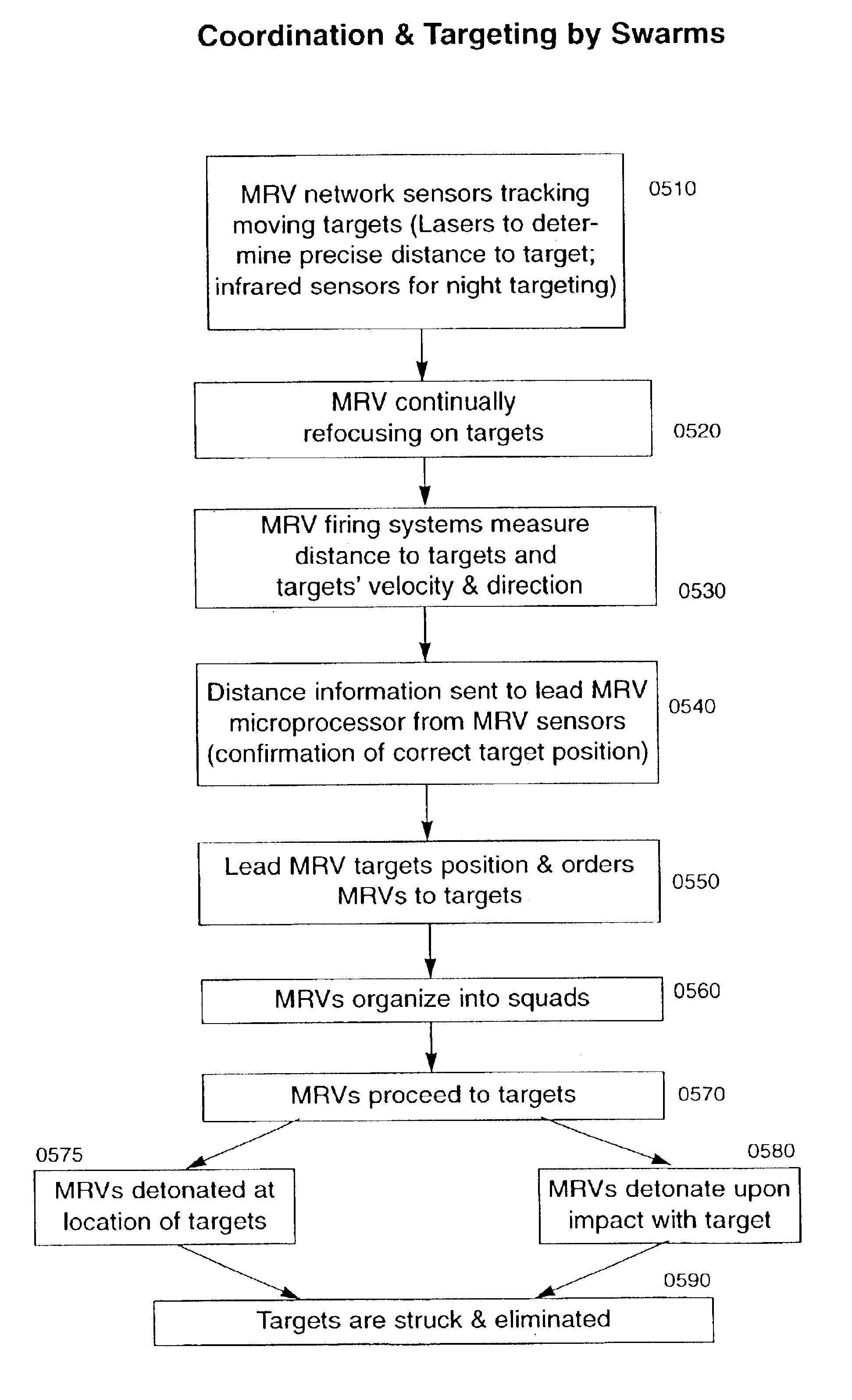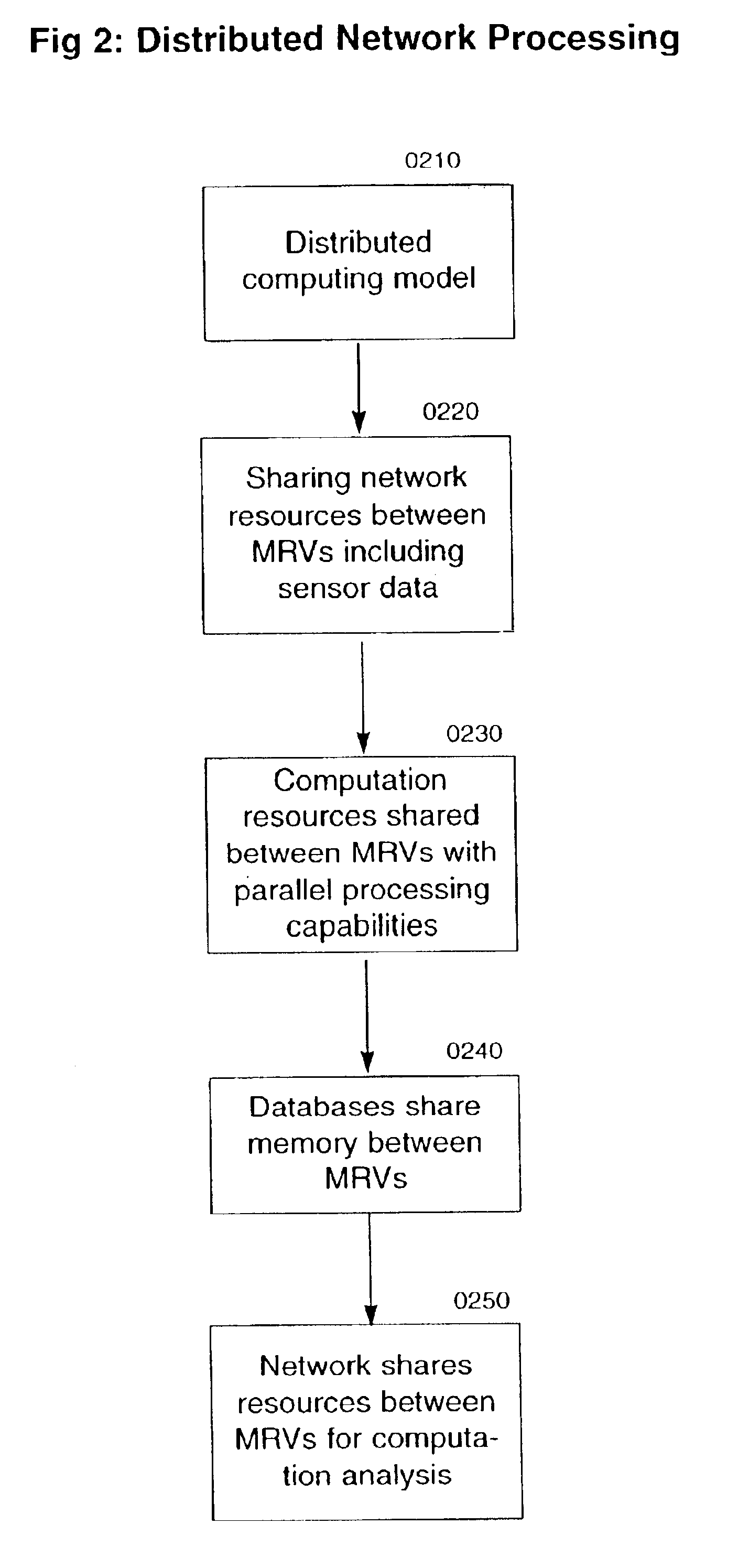Methods and apparatus for decision making of system of mobile robotic vehicles
- Summary
- Abstract
- Description
- Claims
- Application Information
AI Technical Summary
Benefits of technology
Problems solved by technology
Method used
Image
Examples
Embodiment Construction
The present disclosures illustrate in detail the main ideas of the present system. The present invention having numerous embodiments, it is not intended to restrict the invention to a single embodiment.
The system and methods incorporated in the present invention are implemented by using software program code applied to networks of computers. Specifically, the present invention represents a multirobotic system (MRS) that includes at least two mobile robotic agents. These robotic agents, mobile robotic vehicles (MRVs), have various useful purposes in the context of specific military applications. The MRVs use complex software program code, including mobile software agents, to execute specific instructions involving robotic and computational operations. The software capabilities activate specific robotic functions within MRVs involving movement and decision-making.
The present invention focuses on how groups of MRVs operate in a MRS. As such, the invention, or cluster of methods, solves...
PUM
 Login to View More
Login to View More Abstract
Description
Claims
Application Information
 Login to View More
Login to View More - R&D
- Intellectual Property
- Life Sciences
- Materials
- Tech Scout
- Unparalleled Data Quality
- Higher Quality Content
- 60% Fewer Hallucinations
Browse by: Latest US Patents, China's latest patents, Technical Efficacy Thesaurus, Application Domain, Technology Topic, Popular Technical Reports.
© 2025 PatSnap. All rights reserved.Legal|Privacy policy|Modern Slavery Act Transparency Statement|Sitemap|About US| Contact US: help@patsnap.com



